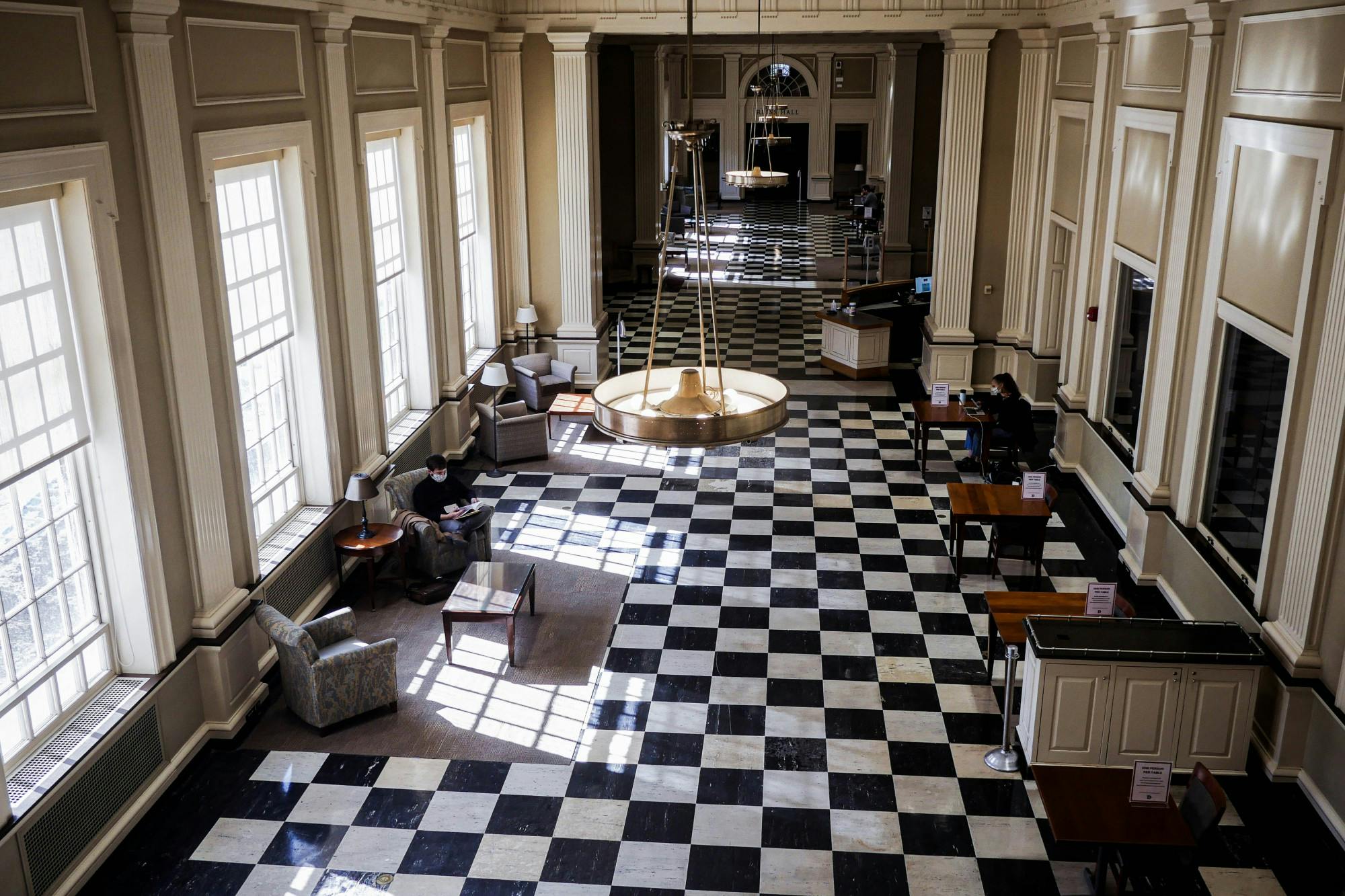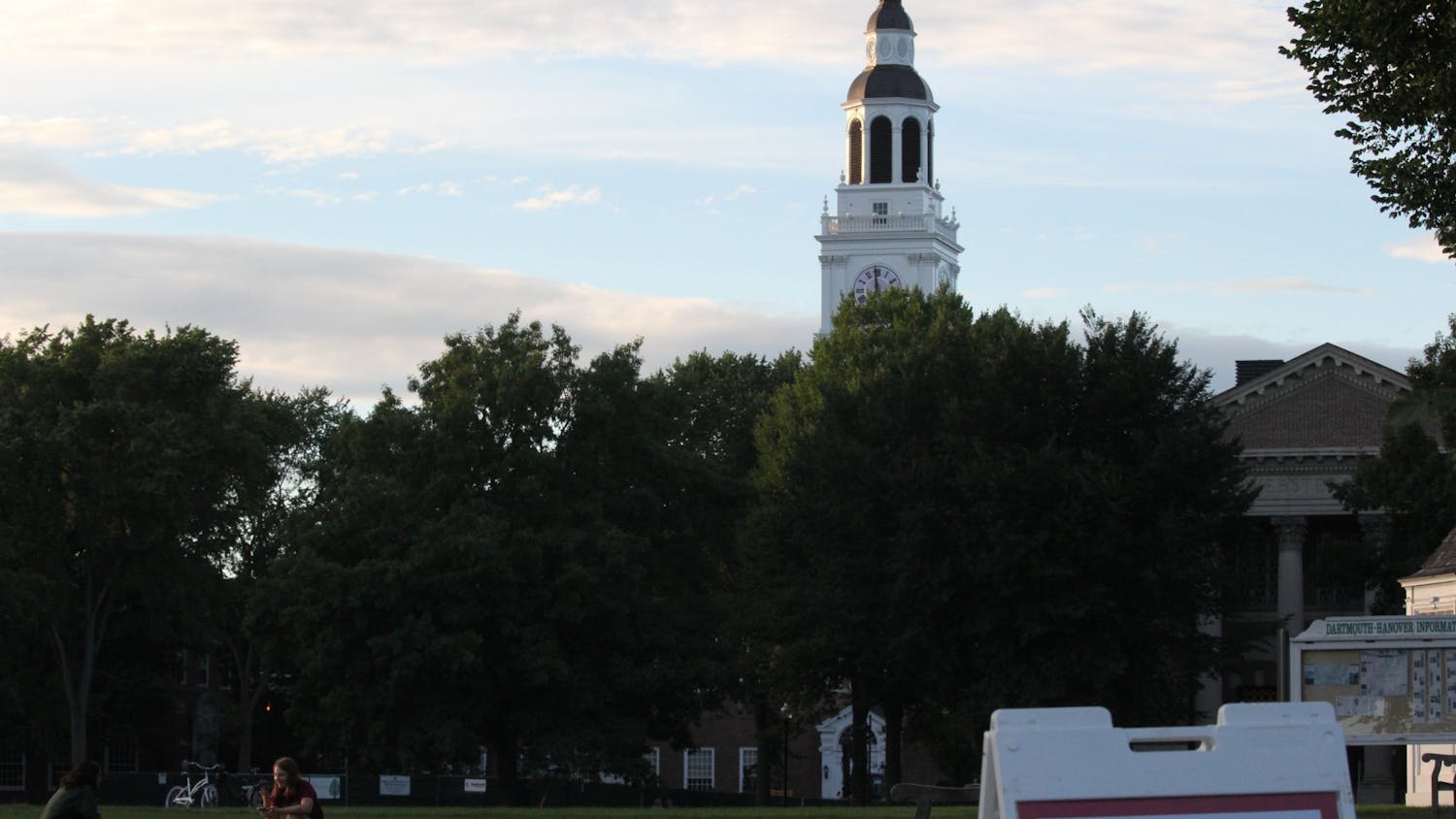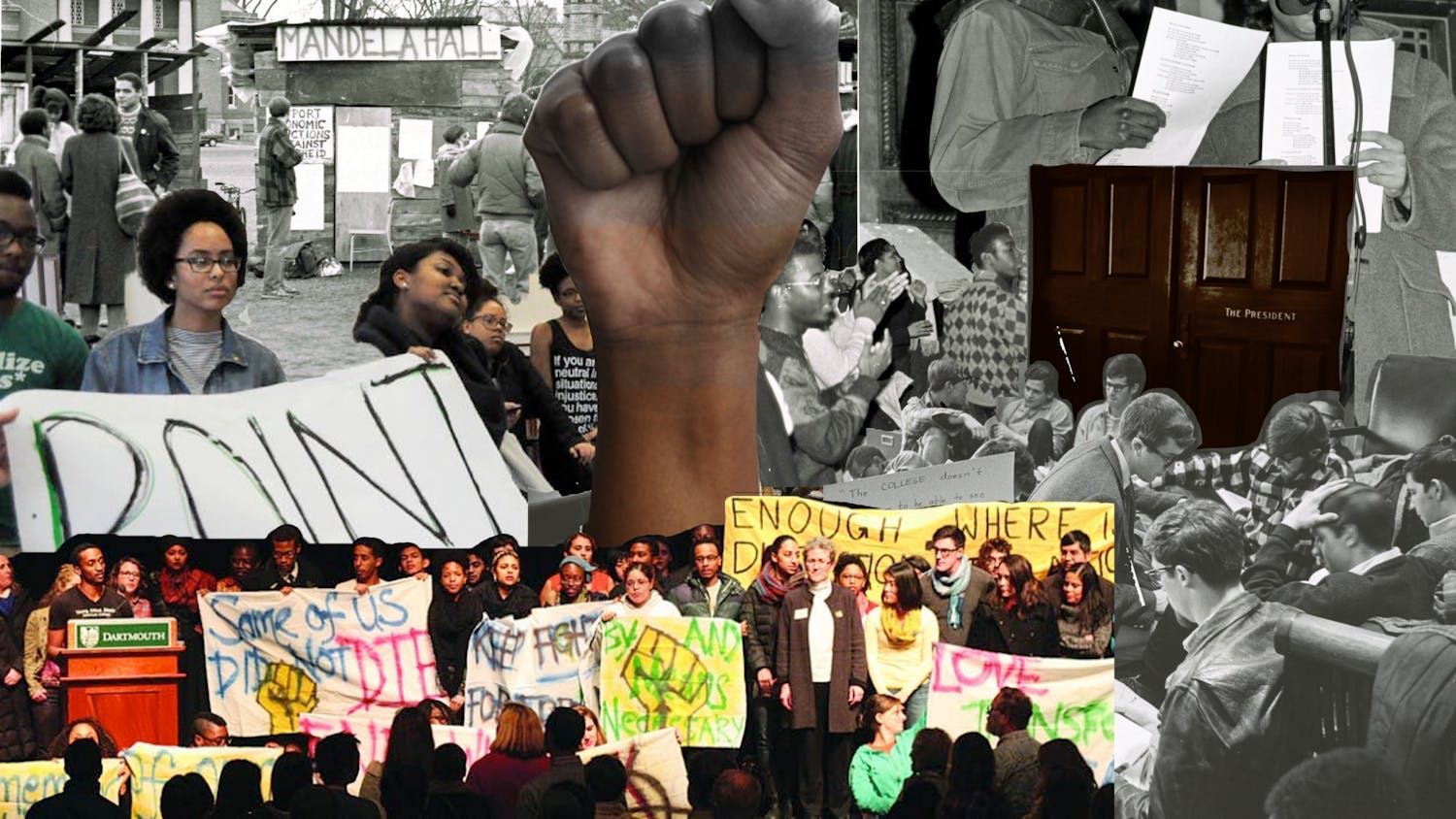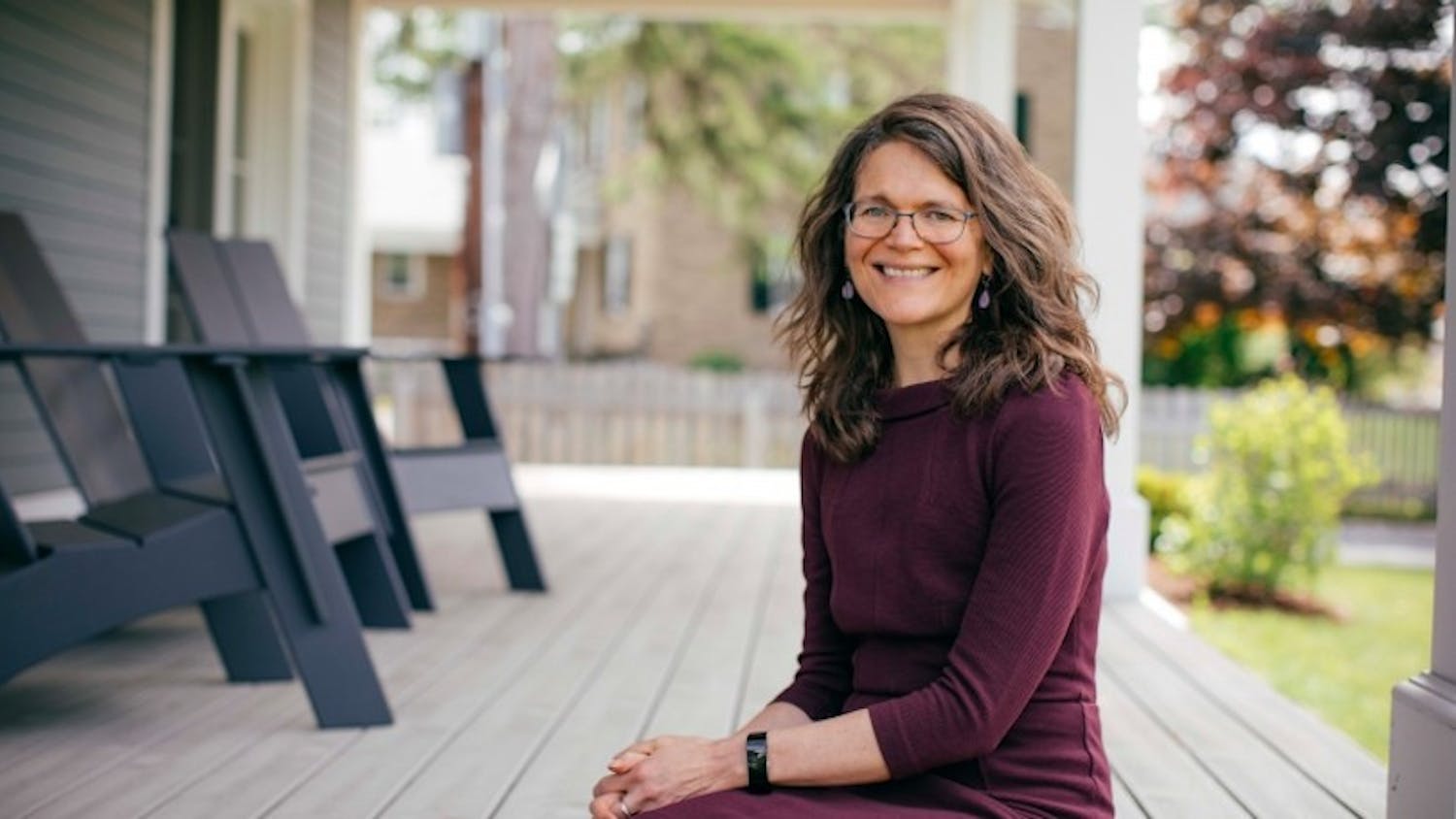Since March 2015, Dartmouth students have been on the receiving end of memorable, quirky content from the @dartmouthlibrary account on Instagram. I was lucky enough to pick the brain of library communications manager Tom Remp, who has been managing the account since late December, and whose reign has given us such segments as “Bird of the Week” and the study space competition. Daniel Chamberlain, associate librarian for digital studies, joined the conversation to speak about the account’s role in the Dartmouth community. Read on to see what they had to say about Instagram aesthetics, the infamous Library Desk Girl and how the account has adapted to COVID-19.
How do you choose what to post on the @dartmouthlibrary account?
TR: I think it’s really important to have a mix of content that changes all the time. We have a mix of pre-planned content and content that just comes up and we think, “This is something we have to jump on and be part of.” It can be anything from illustrating what’s going on in the library to highlighting important projects that the library is involved in, including the Book Arts Workshop. I think the Book Arts Workshop is probably my favorite. It’s so dynamic and interesting. We’re also working on a piece that may be good to highlight, which is the exhibition “Gobbledygook & Baloney! The 1984 Democratic Presidential Debate at Dartmouth College.”
The account can post anything from exhibitions and events to important announcements or photos of the library community — things that I feel really help to remind people that we’re all in this together. We’re a part of the community, and we really care about all the students and faculty and staff who come through and see us.
Why do you feature students so frequently on the account?
TR: For me, it’s really important to bring things back to why we’re here, which is the students. What I really like about showing student photographs is it gives a sense of how diverse the Dartmouth population is, and it gives people the opportunity to see themselves working, which a lot of people really enjoy.
We started showing photos of students very gradually to see if people would appreciate them. We found that they got masses of engagement, and people got really excited about seeing themselves and seeing their friends, so it’s something we decided to expand and do a lot more of.
How do you think the function of the account has changed during the pandemic?
TR: I think that it’s very important to remember that the world has fundamentally changed. It’s 2020, and what I want the Dartmouth Library Instagram to do is provide some light humor, give some support to students and provide a lot more than we were doing before. We went from being quite education-focused, which we still are to a large extent, to really saying: “We need to check in with our students. We need to support our students and we need to let them know that we’re here for them.” Even if students are scattered across the world and working from home, we can provide services for them. We’re here to help with anything people need, and that hasn’t and will not change.
DC: One of the things that we’re really cognizant of right now is that the student experience at Dartmouth is different than it normally is. We normally think a lot about the platform for community that the library provides. Sometimes that’s because we’ve got cool programming, and sometimes that’s because we’ve laid out our space in a welcoming way. A lot of times it’s just because we’ve provided an environment where students can do their thing. We’re thinking a lot about what it means to be an on-campus student right now and what it means to be a remote student. I think a lot of the stuff that Tom and the rest of the library staff are trying to do every day and through the Instagram account is trying to help connect people in ways that are meaningful.
What would you say is the aesthetic philosophy of the Dartmouth Library Instagram?
TR: That’s a tricky one. I like people to look at our stuff and say, “That’s really cool.” I like to be the thing that people pause over and want to learn a little bit more about, whether that’s looking at something really interesting from Rauner Special Collections Library, which we post a lot of material from, or even a new resource that students have access to.
How is the Dartmouth Library study space competition engaging students with the account?
TR: I’d say one of the key things that we’ve done to engage with the community during COVID has been the study space competitions that we’ve run, one of which is still going on — and I have to give a plug to that. What’s really exciting about that is we’re giving the opportunity to members of the Dartmouth community to showcase where they are and how they’re feeling. Because the library has always been a space where so many students choose to study, I wanted it to still be that, no matter where our students are currently.
We’ve had students all over the world, all over the United States, send us really powerful images of where they’re working right now, how they’re feeling, how they’re coping with things and what they’re looking forward to when they can finally get back — also what they’re grateful for. That’s been incredibly powerful and has absolutely blown me away. The other exciting part of this project is that I’m able to help local businesses by giving gift cards as rewards for entries.
How do you use the account to welcome ’24s who might not be getting the full Dartmouth experience?
TR: I worked very closely with digital library fellow Betty Kim ’20. Betty was instrumental in putting together a campaign of panorama photos highlighting library spaces leading up to the term. These were designed for ’24s to get a good sense of what to expect in the library — what would be open, what wasn’t that will be eventually — and to really make them feel at home in what was quite a tricky time as they were transitioning into becoming Dartmouth students.
Do you have a favorite segment from the Dartmouth Library Instagram?
TR: The #NowAndThens are evolving in really interesting ways. They started off with just being photos of campus from digital library collections, but we’ve started to look further afield for images. So we’re utilizing a lot more material from Rauner, including old postcards, which we have a huge collection of, and prints from our fellows photography collection. The whole point is to look at the Upper Valley and campus through how it is now and how it was. I don’t want to give too much away. I have a few things planned.
Any updates on the whereabouts of the notorious library outlaw, Library Desk Girl?
TR: Library Desk Girl, the hero we deserve. I will not comment on that.
Is there something you wish people knew about in Dartmouth’s library? Or maybe some resource that students aren’t taking enough advantage of?
TR: Probably the most important resource we have is our librarians. We have a subject librarian for every single major at Dartmouth, and they’re absolutely phenomenal people with so much knowledge. They can help in all sorts of ways, and I recommend everybody reach out to their subject librarian if they ever have any questions. If they’re looking for something or want advice with a paper or anything, they’re really, really helpful.
What are some things we can look forward to seeing from the Dartmouth Library Instagram?
TR: More of everything! I would love to feature many of our amazing collections at Rauner which I haven’t gotten to yet. I’d love to showcase more of what our librarians are doing and ways they can help students.
What do you want people to take away from the account?
DC: In general, I think what we’re trying to do is to make sure that people broadly have a sense of all of the exciting things that the Dartmouth Library is doing. This is encapsulated in some of the answers Tom gave about the collections, the spaces and the expert staff. And we want to do all that with a little bit of personality.
TR: I just want students to get a real sense of what we can provide. We want to seem approachable and for students to feel like they can reach out with questions. There are so many ways to get in touch with the library. Even if people just DM us on Instagram with a question, we’ll answer that.
As I discovered myself!
TR: See, that’s really exciting. You can contact us with any question, and we’ll do what we can to help.
I’ll be sure to encourage everyone to slide into the Dartmouth Library’s DMs.
This interview has been edited and condensed for clarity and length.





